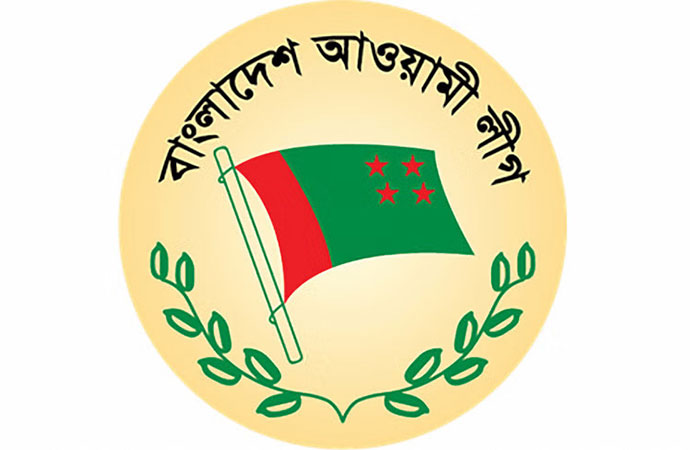Reportage

Photo: Ehteshamul Haque Adit/Unsplash
For those of a generation that experienced upto 12 hours of loadshedding a day in the heart of the capital till as late as 2010, before the then-still-newly-elected Awami League government's plan to turn things around finally started translating into some changes on the ground. Whatever criticism may be directed at the AL's chosen strategy for doing so, in particular the alleged over-reliance on rental power plants for the more immediate relief, every citizen of Bangladesh will have appreciated the gradual erasure of what had grown into a nightmare in the live of its citizens, over the course of the next 4-5 years.
The point that the 'return' of loadshedding is not really a return, since in some parts of the country it never really went away completely, is well taken. Nevertheless, the rationed power cuts experienced in so many parts of the country this week was the closest the country felt, to those dark days circa 2009, or previously.
According to the Power Development Board's (PDB) own internal data, as reported by our sister newsagency UNB, the country had to resort to 1500 MW of loadshedding on Sunday (Jul 3), when Biddyut Bhaban's internal forecast already projected a shortfall of around 1275 MW for the day - signalling things were already in a worse state than even the authorities were aware of.
"Obviously, they had to go for loadshedding even more than the projected amount," said a top official of the PDB, who preferred anonymity.
The official data showed the peak power generation of 12,115 MW was recorded in the evening on Sunday, against a demand for 13,615 MW, leading to a 1500 MW gap between the peak demand and supply in power generation.
"This gap is being covered up by loadshedding," said the PDB official.
Normally, power generation on any given day falls within a 1400 MW range near the top, and the highest generation of 14,782 MW was recorded on April 16 this year.
According to PDB official data, on July 3 it was the Dhaka region that experienced the highest 400 MW of the total 1500 MW shortfall; while Chattagram 200 MW, Khulna 220 MW, Rajshahi 220 MW, Cumilla 140 MW, Mymensingh 120 MW, Sylhel 50 MW and Rangpur region 150 MW.
However, many energy experts don't trust the PDB statistics. Rather they believe that the extent of the load shedding and interruption in power supply are both more than the official figure.
"PDB never provides an actual figure of its power supply scenario," said energy expert and Consumers Association of Bangladesh's senior vice chairman Prof M Shamsul Alam. Meanwhile, many consumers in the capital Dhaka and elsewhere complained that 'huge load shedding' had become normal, along with frequent interruptions in power supply.
Habibur Rahman, a resident of Uttara in the city, informed that they are regularly experiencing loadshedding in three to four spells a day, and every time more than half an hour at a time.
Similar experiences were shared by consumers in other areas in the city including Malibagh, Mouchak, Nakhalpara, Shantinagar, Mogbazar, Niketon, Gulshan, Mohammadpur, Mirpur, Sutrapur, Jatrabari and Badda. They said the extent of such load shedding and interruption in power supply has been increasing in recent days.
PDB officials acknowledged a fall-off, and attributed the fall in power generation to the shortage in gas supply. Instead of the 1400 MW range near the top, they said they are having to suspend generation of upto 3650 MW due to shortage in gas supply to their power plants.
Recently, State Minister for Power, Energy and Mineral Resources Nasrul Hamid has also acknowledged the crisis in power and gas supply. On his verified Facebook page he wrote: "Power production is being disrupted due to shortage of gas. As a result, power supply is being disrupted in many places. The power generation generally will be normal once the gas supply improves."
He also claimed the price hike of energy in the international market due to the war has put us in trouble like other countries. "In such a situation I regret the temporary inconvenience," he added.
State-owned Petrobangla officials noted that the gas supply experienced its latest fall following a government decision not to import liquefied natural gas from the international spot market due to excessive price hike.
LNG is being sold at $35 per MMBtu in the global market, whereas a few months back it was below $25 - a 40 percent hike. As a result, the local gas supply has decreased to 2,822 million cubic feet per day (mmcfd) from a regular supply of 3500 mmcfd which creates a shortage of about 700 mmcfd, or 20 percent below the normal.
Hello Darkness, my old friend
The loadshedding continued across the country throughout the week, as consumers in many areas in the capital Dhaka and elsewhere experienced power cuts for several hours in a number of spells. According to PDB, the country had to experience about 1400 MW of loadshedding on Tuesday (Jul. 5), only slightly less than the 1500 MW shortfall on Sunday.
As a result, consumers in and outside the capital had to experience frequent interruption and load shedding, said an official of the BPDB. He attributed the fall in power generation to the shortage of gas supply to the power plants saying that the BPDB had to hold up generation of about 3400 MW of electricity despite having the capacity.
Dhaka city alone had to experience over 500 MW of loadshedding. Managing director of Dhaka Power Distribution Company Limited (DPDC) Bikash Dewan informed that his area had to go for 400 MW loadshedding to cover the gap between demand and supply.
"DPDC received 1200 MW of electricity against the demand for 1600 MW," he told UNB.
He said that he is trying to design a plan for loadshedding so that people could be aware of the interruption to mentally accept the power cut.
"If we could implement such a plan, it will lessen sufferings to the people," he said.
The areas under DPDC in the city include Mohammadpur, Dhanmondi, Lalbagh, Sutrapur, Jatrabari, Malibagh, Mogbazar, Tejgaon, Kakrain, Santinagar, Agargaon, Kalabagan, Kawranbazar and Tejturibazar area.
The areas under the Dhaka Electric Supply Company Limited (Desco) also had to experience black outs in several spells. Desco had 134 MW loadshedding in its areas, said its managing director Kawsar Ameer Ali. Desco was allocated 800 MW plus electricity against a demand of over 1000 MW.
Desco mainly distributes electricity to the city's west, north-west, and eastern parts which include Uttara, Mirpur, Badda, Gulshan, Banani, Baridhara, Niketon, and Badda.
Consumers outside the capital alleged that they had to experience blackouts for several hours.
"Even, consumers in many areas had to keep without electricity for 5-6 hours a day in different spells," said an official of the Consumers Association of Bangladesh (CAB), which received reports from different areas across the country.
Meanwhile, the Ministry of Power, Energy and Mineral Resources held a high level meeting with officials of BPDB and Petrobangla to find a way to improve the power and gas supply situation, although to no avail. An official who attended the meeting said that Petrobangla was asked at the meeting to increase gas production so that more gas-fired power plants could resume operation. But without a higher level decision to resume LNG imports, there would seem to be little possibility for the state hydrocarbons agency to comply with such a request.
Gone till September?
The prevailing spell of loadshedding resulting from a gas crisis is likely to continue until September. The government may cut office hours, curb use of air-conditioners, and prevent unnecessary lighting across the country in an effort to combat the power crisis. At the same time, the offices may enforce work from home policy again like the pandemic-time, according to the prime minister's energy advisor Tawfiq-e-Elahi Chowdhury.
He was speaking at a press conference at the prime minister's office (PMO) on Thursday (Jul. 7) afternoon, after a meeting on the prevailing power and gas crisis.
The PM's advisor said it will take two and a half months to normalise the power supply. The situation may return to normalcy by September when several coal-fired power plants are scheduled to go into operation.
He, however, spoke against the proposal of prior notice for loadshedding as per area-based routine and said it would be quite difficult to execute.
Apart from him, energy and mineral resources division secretary Mahbub Hossain and power division secretary Habibur Rahman were present at the press briefing. The meeting was attended by representatives from Petrobangla, Bapex, Bangladesh rural electrification board, cabinet, and other agencies concerned.
Tawfiq-e-Elahi Chowdhury disclosed the outcome of the meeting and said the recommendations will be placed before the prime minister for consideration.
The recommendations include: fixing government office hours from 9:00 am to 3:00 pm, completing wedding events by 7:00 pm, keeping AC temperature at 25 degree or above, imposing ban on lighting, closing malls by 8:00 pm, and curbing use of power at religious places.
The issue of work from home is also under active consideration, he said, adding that the demand for power would be curtailed by 500 megawatt (MW) once these recommendations are executed.
Asked how the energy crisis would subside by September, he said some 1,200 MW electricity will be supplied to the national grid from the coal-fired power plants in September while 1,320 MW from Rampal and 700 MW from Payra power plants. It will decrease the load shedding.
Is the widespread dependency on imports the main reason behind the prevailing crisis? He, replying to this question, said those who deliver such remarks are not right. Gas production from local sources is being increased and new initiatives are being taken to boost the production further.
However, he said Bangladesh is now in a better condition compared to many developed countries, including the United Kingdom, Germany and Australia.
About implementation of routine-based load shedding, he said the Dhaka Power Distribution Company (DPDC) has developed a mobile app for instructing the officials on load shedding. But disseminating the information among the public would be a difficult job.
Meanwhile, the government is all set to go tougher against the illegal gas connections and clients with due gas bills, he added.
Importing energy: A slippery slope
Bangladesh has natural gas, but always imported oil. With no new significant reserves uncovered for years, the government has focused on importing LNG to ensure energy security. Energy is the most volatile commodity in the world. Its price never remains stable. Yet the government has chosen to rely on risky imports. What is frustrating is that it has gone down this road without exhausting its scope for exploration. As a result, whenever a global crisis arises, Bangladesh can't avail LNG at low prices. And this disrupts power production, leading to frequent loadshedding, people suffering and decreased industrial production.
French technology company Schlumberger carried out a survey in 2011, stating that if the existing gas fields could undergo certain changes and renovations, it would be possible to increase gas extraction by around 500 million cft of gas over a span of three years. While the government had hired Schlumberger to carry out the survey, it did not follow up with the recommendations.
Natural gas had been the main source of energy for Bangladesh for decades until recently when it began importing LNG, in 2018, which is estimated to cost BDT 28,000 crore or EUR 280 million annually if consumption hits 1,000 mmcfd.
Despite complete reliance on natural gas, Bangladesh's exploration has been focused mainly on onshore areas, particularly in its eastern zone where most gas fields have been discovered. Still, half of the potential places in eastern Bangladesh remain unexplored. In the 1980s, the entire country was divided into 23 blocks most of which lay unexplored, except for only partial exploration in the districts of Dhaka, Tangail, Khulna and Barishal.
"The government alone cannot step up exploration activities without the private sector stepping in to supplement the government efforts as it did in power generation and LNG import," said Mohammad Ali, Managing Director of the Bangladesh Petroleum Exploration and Production Company, in an article ("Gas reserve potential left unexplored in Bangladesh") circulated by Stein and Partners, an international consultancy firm.
Over the five decades since independence, Bangladesh drilled about 100 wells, mostly onshore, whereas India drilled 545 wells in 2017-18 alone. The ambitious government project for drilling 108 wells between 2016 and 2021 ended up digging only eight wells so far. From 26 onshore gas fields Bangladesh's current output hovers around 2,700mmcfd against the demand for 3,300mmcfd.
About 60 per cent of the gas produced daily is extracted from fields managed by international oil companies (IOC). Four of the 18 wells dug since 2009 have been drilled by IOCs. Even limited exploratory activities are often marred by corruption and irregularities. IOCs spend twice as much as Bapex does in drilling a well.
According to Professor Badrul Imam, "Bangladesh is the least explored of the most prospective gas reserve in the world". What could be a more damning indictment of the policymakers who have helmed the nation throughout its journey since independence?

























Leave a Comment
Recent Posts
How China's reform benefit the ...
"It's very clear that China has entered a new era under Presi ...
How do we heal?
After the unprecedented violence of the past two weeks, the most impor ...
The High Court fixed July 25 for delivering verdicts
Biden’s legacy: Far-reaching accomplishments that di ..
US President Joe Biden dropped out of the 2024 race
“A kiss over bribe”: Nachiketa’s social message to D ..